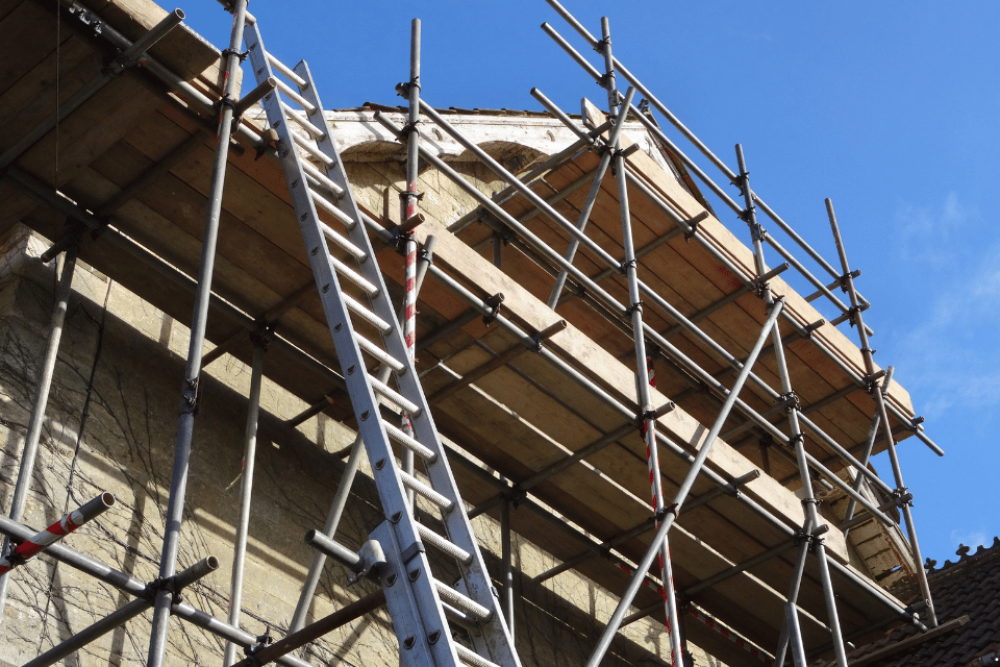
Understanding The Vital Role Of Fascia Boards In Roof Health
Fascia boards are often overlooked yet crucial components of a roof. They play a fundamental role in maintaining structural integrity and aesthetic appeal. Positioned beneath the edge of the roof where it meets the outer walls of a house, fascia boards serve multiple functions essential for the overall health and longevity of the roof. We will explore the significance of fascia boards, their maintenance requirements, and their impact on the durability of your roof.
Importance of Fascia Boards
Fascia boards serve as a protective barrier between the edge of the roof and the elements. Covering the ends of the roof rafters they prevent moisture from infiltrating the roof structure, which can lead to rot, mold, and other forms of water damage. Additionally, fascia boards provide a finished look to the roof by creating a smooth, even appearance along the roofline. This aesthetic function enhances the house's curb appeal, making it visually appealing from the outside.
Structural Support and Attachment Points
Beyond their aesthetic and protective roles, fascia boards from KTM EXTERIORS & RECYCLING LLC of Groveland provide crucial structural support for the gutter system. Gutters are typically attached to the fascia boards, relying on them to bear the weight of rainwater and debris flowing through the gutters. Properly installed and maintained fascia boards ensure the gutters remain securely in place, preventing sagging or detachment that could lead to water pooling around the house's foundation. This structural support is essential for effectively draining rainwater away from the roof and walls, thus preserving the integrity of the entire roofing system.
Material Choices and Durability
The choice of materials for fascia boards significantly influences their durability and performance. Common materials include wood, aluminum, vinyl, and composite materials. Each material offers varying levels of durability, maintenance requirements, and aesthetic appeal. Wood fascia boards, for example, are traditional and provide a natural look but require regular painting or staining to protect against moisture and sun damage. Aluminum and vinyl fascia boards are low-maintenance options that resist rot and insect infestation, making them popular for modern homes. Composite materials combine the benefits of durability with the aesthetic flexibility of wood alternatives, providing a long-lasting solution for fascia board applications.
Maintenance Practices
Regular maintenance of fascia boards is crucial for prolonging their lifespan and ensuring the roof's overall health. Inspecting the fascia boards annually for signs of damage, such as rot, cracks, or peeling paint, allows homeowners to address issues promptly before they escalate. Cleaning debris from gutters and ensuring proper drainage also helps prevent water from accumulating and causing damage to the fascia boards. Additionally, trimming overhanging tree branches can reduce the risk of leaves and branches clogging gutters and contributing to moisture buildup. By incorporating these maintenance practices into a routine home care schedule, homeowners can extend the longevity of their fascia boards and preserve the integrity of their roofs.
Impact of Weather Conditions
Weather conditions significantly impact the lifespan and condition of fascia boards. Exposure to sunlight, rain, snow, and fluctuating temperatures can gradually wear down even the most durable materials. Wooden fascia boards, for instance, may warp or crack over time when exposed to prolonged moisture or extreme heat. In contrast, metal and vinyl fascia boards are more resilient to weather-related damage but may require periodic inspection and maintenance to ensure their effectiveness. Regularly assessing the condition of fascia boards after severe weather events allows homeowners to promptly identify and address any potential issues, preserving the structural integrity of their roof.
Role in Energy Efficiency
Beyond their structural and aesthetic functions, fascia boards also contribute to a home's energy efficiency. Properly installed and maintained fascia boards help create a tight seal along the roofline, reducing air leakage and improving insulation. This thermal barrier helps regulate indoor temperatures and minimize yearly heating and cooling costs. By preventing drafts and heat loss, fascia boards play a subtle yet significant role in enhancing the overall energy efficiency of residential buildings, contributing to sustainable living practices, and reducing carbon footprints.
Professional Maintenance and Repair
While homeowners can perform basic maintenance tasks on fascia boards, such as cleaning and inspection, specific issues may require professional attention. Roofing contractors and specialized maintenance services possess the expertise and tools to handle complex repairs, such as replacing damaged fascia boards or addressing underlying structural issues. Professional maintenance ensures the safety and longevity of fascia boards and provides peace of mind for homeowners, knowing that their roof is in capable hands. By investing in professional maintenance and repair services as needed, homeowners can protect their property investment and maintain a secure and aesthetically pleasing roofline for years to come.
Fascia boards play a critical role in maintaining a roof's structural integrity and aesthetic appeal. From providing a protective barrier against moisture infiltration to supporting the gutter system and enhancing curb appeal, fascia boards are indispensable for any roofing system. By understanding their importance and implementing regular maintenance practices, homeowners can ensure that their fascia boards remain in optimal condition, contributing to their roofs' overall health and longevity. Proper material selection, diligent inspection, and proactive maintenance are crucial to maximizing the lifespan and performance of fascia boards, thereby safeguarding the investment in a functional and attractive roof.

